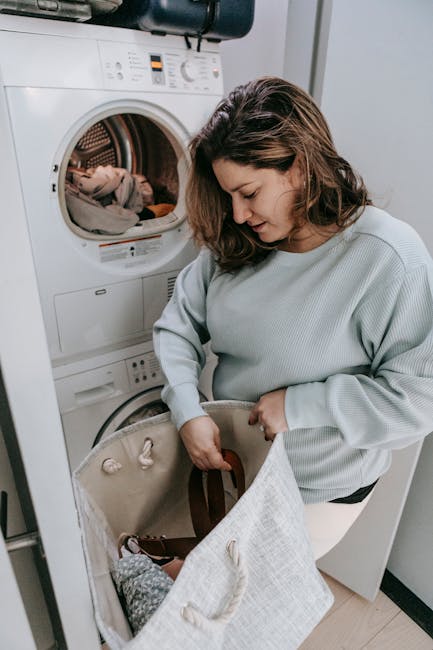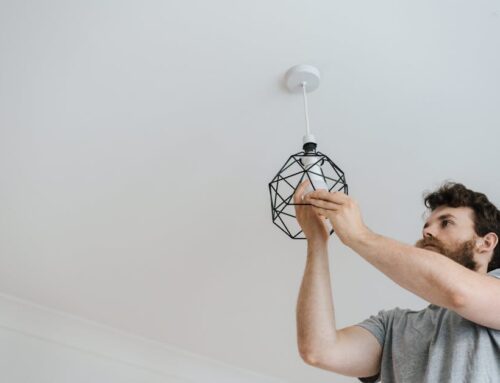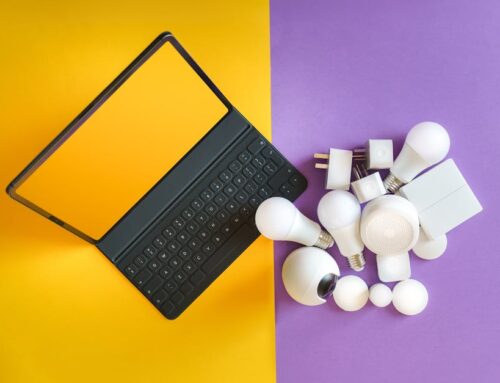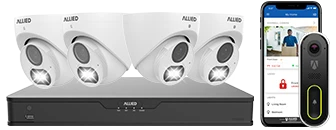Understanding Home Automation
Home automation refers to the use of technology to control and manage household systems and devices remotely. It allows homeowners to automate functions such as lighting, climate control, appliances, and security, making everyday tasks more convenient and efficient.
This technology relies on a network of devices that communicate with each other over the internet. Commonly known as the Internet of Things (IoT), these devices can be controlled through a central hub, smartphone app, or voice-activated systems like Amazon Alexa or Google Assistant.
Benefits of Home Automation:
- Convenience: Automating routine tasks saves time and effort.
- Energy Efficiency: Automated systems can optimize the use of energy, reducing waste and lowering bills.
- Enhanced Security: Integrated security systems offer real-time monitoring and alerts.
- Customization: Homeowners can tailor automation systems to fit their specific needs and preferences.
Home automation can be as simple or complex as a homeowner desires. Below is a table showing common devices used in home automation and typical functions they perform:
| Device | Function |
|---|---|
| Smart Thermostat | Automatically adjusts heating and cooling based on preferences and occupancy patterns. |
| Smart Lighting | Controls lighting remotely, sets schedules, and adjusts based on natural light availability. |
| Smart Locks | Enables remote locking and unlocking of doors, and monitoring of door status. |
| Security Cameras | Provides real-time video monitoring and alerts for suspicious activity. |
To implement home automation, it’s essential to have a robust internet connection and compatible devices. Further, understanding the specific needs and preferences of household members is crucial for a successful setup and to fully leverage the benefits of home automation.
Key Components of Home Automation
Home automation systems consist of various key components that work together to create a seamless and efficient smart home environment. Understanding these components is essential for making informed decisions about integrating home automation into your daily routine.
Central Control Hub
The central control hub acts as the brain of the home automation system. This device connects and manages the various smart devices throughout your home, allowing them to communicate with each other. Popular options for central control hubs include Amazon Echo, Google Nest Hub, and Apple HomePod.
Smart Lighting
Smart lighting systems offer customizable and energy-efficient lighting solutions. These systems allow for remote control via smartphone apps, voice commands, or automated schedules. Brands like Philips Hue and LIFX offer a wide range of smart lighting products, including bulbs, light strips, and fixtures.
Smart Thermostats
Smart thermostats help manage your home’s heating and cooling systems more efficiently. These devices learn your schedule and preferences, automatically adjusting the temperature for optimal comfort and energy savings. Leading smart thermostats include the ecobee SmartThermostat and the Google Nest Thermostat.
Smart Security Systems
Home security is greatly enhanced with smart security systems. Components such as smart locks, cameras, doorbells, and sensors provide real-time monitoring and alerts. Notable products include the Ring Video Doorbell, Arlo Pro Cameras, and August Smart Lock.
Smart Appliances
Smart appliances bring convenience to various household tasks. These include refrigerators, ovens, washing machines, and more that can be controlled and monitored remotely. Brands like Samsung and LG offer a growing range of smart kitchen and laundry appliances.
Voice Assistants
Voice assistants such as Amazon Alexa, Google Assistant, and Apple Siri provide hands-free control over your smart home. These assistants can interact with a wide range of compatible devices, making it easier to manage routines, set reminders, and access information.
Network Infrastructure
Having a robust network infrastructure is crucial for a reliable home automation system. Wi-Fi routers and extenders ensure all smart devices remain connected and functional. Brands like Netgear and Linksys offer range-extending solutions to cover larger homes.
Each of these components plays a vital role in creating a cohesive and functional home automation system, contributing to an enhanced daily routine.
Implementing Home Automation in Houston
Implementing home automation in Houston requires a strategic approach that takes into account the unique characteristics of the city, such as its climate, infrastructure, and available technology. Here are key steps and considerations:
1. Assess Your Needs and Goals:
Determine what you want to achieve with home automation. Common goals include increased convenience, energy efficiency, and enhanced security. Make a list of daily routines and tasks you would like to automate, such as lighting control, climate regulation, and home security management.
2. Choose Compatible Devices:
Select devices that are compatible with each other and can be managed through a centralized system or app. Popular home automation platforms include Amazon Alexa, Google Home, and Apple HomeKit. Ensure that the devices you purchase, such as smart thermostats, lights, locks, and cameras, integrate seamlessly with your chosen platform.
3. Focus on Energy Efficiency:
Houston’s hot and humid climate makes energy efficiency a priority. Consider installing smart thermostats that can learn your schedule and adjust the temperature accordingly to save energy. Smart lighting systems can also help reduce electricity consumption by turning lights off when not needed and adjusting brightness based on natural light availability.
4. Enhance Security:
Home security is a critical component of automation. Invest in smart security systems that include features like remote monitoring, motion detection, and real-time alerts. Camera systems with cloud storage can provide additional security by allowing you to review footage from anywhere.
5. Professional Installation vs. DIY:
Depending on the complexity of the system, you may choose to hire a professional installer or do it yourself. Professional installation ensures that everything is set up correctly and can provide you with tailored advice on optimizing your system. However, many modern devices are designed for easy DIY installation and come with comprehensive instructions.
6. Leverage Local Services:
Take advantage of local Houston services and support, such as electricians, HVAC specialists, and home automation experts. These professionals are familiar with local building codes and climate considerations, ensuring that your system is both effective and compliant.
7. Regular Maintenance:
Regularly update your devices and systems to ensure they function correctly and securely. Schedule periodic maintenance checks to troubleshoot any issues and keep your system running smoothly.
8. Stay Informed:
Stay updated with the latest advancements in home automation technology. As new products and features become available, consider how they might enhance your existing system and contribute to more efficient home management.
Daily Routines Enhanced by Home Automation
Morning Routine
Home automation can significantly streamline and enhance your mornings. Smart thermostats can preheat or cool your home before you wake up, ensuring a comfortable temperature as soon as you get out of bed. Additionally, smart lighting systems can gradually increase the brightness in your bedroom to simulate a natural sunrise, helping you wake up more naturally and feeling refreshed.
Automated coffee makers and smart kitchen appliances can prepare your breakfast at a pre-set time, allowing you to enjoy a warm cup of coffee or a freshly toasted bagel as soon as you enter the kitchen. Integration with voice assistants like Amazon Alexa or Google Assistant enables you to receive morning news briefings, weather updates, and traffic reports through simple voice commands, making it easier to plan your day ahead.
Work Day Routine
For those who work from home, home automation can create an ideal working environment. Smart blinds or shades can be programmed to adjust based on the time of day or sunlight intensity, reducing glare on your computer screen and promoting better concentration. Smart speakers can be used to play background music or white noise, which has been shown to improve focus and productivity.
Smart plugs can be used to control office equipment, such as printers or lamps, only when needed, thus saving energy. Moreover, video doorbells and smart locks ensure that you can monitor and control access to your home office, enhancing security without interrupting your workflow.
Evening Routine
In the evening, home automation helps you unwind and transition into a more relaxed state. Smart lighting systems can be set to dim the lights gradually as it gets late, creating a calming ambiance. Automated routines can close your blinds or lock your doors at a specific time, giving you peace of mind without lifting a finger.
Smart entertainment systems can turn on your favorite evening news show, movie, or music playlist as you relax after a long day. If you have smart speakers, you can use them to control these systems through voice commands, making it easy to access entertainment options without having to manage multiple remotes or devices.
Night Routine
As bedtime approaches, home automation ensures that your home is secure and ready for the night. Smart thermostats can adjust the temperature to an optimal setting for sleep, which experts recommend as being cooler than daytime temperatures. Automated lighting systems can turn off or dim lights throughout the house, reducing energy consumption and helping your body prepare for sleep.
Additionally, smart home security systems can activate automatically, locking doors, and setting alarms. Some systems even allow you to check all windows and doors via an app, ensuring your home is secure without requiring physical checks. This provides a layer of security that allows you to rest easy, knowing your home is protected.
Weekends and Leisure
On weekends or during leisure time, home automation can enhance relaxation and family activities. Smart irrigation systems can water your garden or lawn automatically, saving you time and ensuring your plants receive the right amount of water. Automated pool cleaning systems can maintain your pool, making it ready for use whenever you are.
For entertainment, smart home theaters can integrate lighting, sound, and streaming services for a seamless viewing experience. Using voice commands or smartphone apps, you can control all these features from one central point, making it easy to switch from a quiet evening to a lively family movie night.
Energy Efficiency and Cost Savings
Home automation can lead to significant improvements in energy efficiency and cost savings. By integrating smart technologies into your home, you can optimize power usage and reduce unnecessary expenditure on utilities. Here’s how home automation can help achieve these benefits:
1. Smart Thermostats
Smart thermostats can learn your preferences and adjust the temperature accordingly, ensuring comfort while minimizing energy waste. According to the Department of Energy, homeowners can save around 10% a year on heating and cooling by using a smart thermostat. These devices can also be controlled remotely, allowing users to adjust the temperature when not at home.
2. Automated Lighting Systems
Automated lighting systems, including smart bulbs and switches, can be programmed to turn off when not in use or dim at specific times. The U.S. Energy Information Administration states that lighting accounts for about 10% of a home’s electricity use. By automating lights, you can significantly cut down on this percentage. Features like motion sensors ensure lights are only used when necessary.
3. Smart Power Strips
Many devices consume power even when turned off, known as phantom loads. Smart power strips can detect when a device is in standby mode and cut off power supply, helping to save energy. The Lawrence Berkeley National Laboratory estimates that standby power can account for 5-10% of household energy use.
4. Efficient Appliances
Modern smart appliances are designed to be more energy-efficient than their older counterparts. For instance, ENERGY STAR-rated appliances meet strict energy efficiency guidelines set by the U.S. Environmental Protection Agency and can significantly reduce utility bills. Smart appliances can also be set to operate during off-peak hours when electricity rates are lower.
5. Real-time Energy Monitoring
Energy monitoring systems provide real-time data on energy usage, allowing homeowners to identify patterns and make informed decisions to reduce consumption. These systems can be integrated with other smart home devices to automatically adjust settings based on usage data.
6. Automating Window Treatments
Motorized blinds and shades can be programmed to open and close based on the time of day or sunlight intensity, reducing the need for artificial lighting and lowering heating and cooling costs. The Natural Resources Defense Council highlights that passive solar heating and cooling can significantly impact energy bills.
By incorporating these strategies and devices into your home automation system, you can achieve notable energy savings and lower your utility costs, contributing both to your financial well-being and environmental sustainability.
Security and Safety Enhancements
Home automation significantly contributes to enhancing security and safety in your daily routine. Advanced technologies and connected devices allow homeowners in Houston to monitor and protect their homes more efficiently and effectively.
Smart Surveillance Systems: One of the most prominent components of a security-enhanced home is a smart surveillance system. These systems consist of internet-connected cameras that provide live video feeds and recordings via mobile apps. Homeowners can monitor their properties remotely, receive alerts about suspicious activities, and review footage whenever necessary. Integrating facial recognition software with these cameras can also help identify individuals entering and exiting the property.
Smart Locks and Entry Systems: Smart locks have transformed traditional entry methods. These devices enable keyless entry using smartphones, PIN codes, or biometric recognition, such as fingerprints. In addition to providing convenient access, smart locks allow homeowners to grant temporary access to visitors or service providers without needing physical keys. Automatic locking mechanisms ensure the house is secured even if you forget to lock up manually.
Automated Lighting and Sensors: Automated lighting systems contribute to home safety by simulating occupancy, deterring potential intruders. Motion sensors connected to smart lighting ensure that exterior and interior lights turn on when movement is detected, providing an additional security layer. This feature is especially beneficial for illuminating pathways or entrances during late hours.
Environmental Sensors: Home automation includes sensors that detect smoke, carbon monoxide, water leaks, and temperature fluctuations. These sensors alert homeowners of potential hazards immediately, allowing for prompt responses to prevent damage or danger. For example, water leak sensors can help avoid significant property damage by detecting leaks early and triggering shutoff valves to stop water flow.
Integration and Control: Centralized control systems enable the integration of all security devices, allowing for seamless monitoring and management through a single interface, typically accessed via a smartphone or tablet. Comprehensive automation platforms can provide alerts, status updates, and control over all connected devices, ensuring homeowners are always informed and can take action when necessary.
By implementing these smart security and safety features, residents in Houston can enjoy enhanced peace of mind, knowing their homes are protected around the clock. The integration of these advanced technologies creates a safer living environment, minimizing risks and enhancing overall home security.
Future Trends in Home Automation
Home automation is an ever-evolving field, with rapid advancements in technology continually reshaping how we interact with our living spaces. Understanding future trends in home automation is essential for those looking to stay ahead of the curve in optimizing their daily routines, especially in dynamic urban environments such as Houston.
One significant trend is the increased integration of Artificial Intelligence (AI). AI is becoming more adept at learning user behaviors and preferences, enabling systems to predict needs and automate responses accordingly. For example, AI-powered thermostats can learn your temperature preferences and adjust settings based on occupancy patterns and weather forecasts, thereby enhancing comfort and efficiency.
Another notable development is the rise of Voice-Controlled Systems. Devices like Amazon Echo and Google Home are continually being refined to provide smoother, more intuitive interactions. These devices can manage an expanding range of home automation systems, from lighting and entertainment to security and HVAC systems, allowing residents to control their environment hands-free.
Future home automation systems will likely see greater Interoperability among devices from different manufacturers. The adoption of universal standards, driven by collaborative efforts such as Project CHIP (Connected Home over IP), aims to make smart home devices more compatible with each other, simplifying setups and enhancing user experience.
5G technology is another game-changer. Its high-speed, low-latency characteristics enable more reliable and responsive home automation systems. As 5G networks become more widespread, they will provide the bandwidth necessary to support a larger number of connected devices, making smart homes more efficient and effective.
In addition, advancements in Home Robotics are poised to play a significant role. Robots designed for specific household tasks, from vacuuming and lawn care to eldercare and companionship, are becoming more sophisticated and accessible. These technologies can significantly reduce the time and effort required for daily chores.
Finally, the push towards Smart Grids and renewable energy sources will increasingly influence home automation systems. Smart home devices that communicate with the grid can optimize energy usage, contributing to environmental sustainability and cost savings.
Keeping abreast of these future trends can help Houstonians make informed decisions about their home automation investments, ensuring they remain at the forefront of convenience, efficiency, and innovation in their daily routines.













